When I was 10 years old, I had a small business that involved going door to door with an empty ice cream pail and a can-do attitude to sell my dog doo-doo disposal services. The trouble was that after too many IOUs and conveniently “lost” checkbooks, my business was looking more like a charity.
The point: your business is never too small for accounting software.
I dug into two popular accounting tools, Wave and QuickBooks, to help you narrow down which tool is best for your business. Keep reading for my breakdown of Wave vs. QuickBooks.
Table of contents:
Wave vs. QuickBooks at a glance
While both Wave and QuickBooks are apt at providing accounting features, each has its own strengths that make it better for certain businesses than others.
-
Wave is best for freelancers or small businesses needing a simple, low-cost invoicing and accounting solution.
-
QuickBooks Online is a better fit for medium to large businesses with more complex accounting needs and a higher budget.
|
Wave |
QuickBooks |
|
|---|---|---|
|
Price |
⭐⭐⭐⭐⭐ Basic plan is free with paid add-ons Mobile receipts: $8/month Payroll: $20/month Bookkeeper: $149/month Fee for processed payments |
⭐⭐⭐ More expensive due to additional features Simple start: $30/month Essentials: $55/month Plus: $85/month Advanced: $200/month |
|
User-friendliness |
⭐⭐⭐⭐⭐ Clean and easy-to-navigate interface |
⭐⭐⭐⭐ Interface can be overwhelming to navigate |
|
Invoicing |
⭐⭐⭐⭐⭐ Customizable templates, preview option, custom fields, easy to use |
⭐⭐⭐⭐⭐ Slightly harder to use but offers more features like additional preview modes and sales tax calculation by location |
|
Reporting |
⭐⭐⭐ Limited reporting options |
⭐⭐⭐⭐⭐ Lots of reporting options and ability to create custom reports with Advanced plan |
|
Time tracking |
N/A |
⭐⭐⭐⭐⭐ Real and manual time tracking, scheduling, time off, and approvals |
|
Inventory management |
N/A |
⭐⭐⭐⭐⭐ Categorize products and services; inventory tracker automatically updates after receiving bills or sending invoices |
|
Mileage tracking |
N/A |
⭐⭐⭐⭐⭐ Track miles, vehicles, and potential deductions |
|
Automation |
⭐⭐⭐⭐ Integrates with Zapier; can categorize transactions and eliminate duplicate transactions, but no other automations |
⭐⭐⭐⭐⭐ Integrates with Zapier; enables automation through its workflow feature (with Advanced plan) |
|
AI capabilities |
⭐⭐ Only offers a chatbot |
⭐⭐⭐ Limited AI features for now; innovation seems to be on the horizon |
|
Live chat support |
⭐⭐ Only offers live chat support during limited hours |
⭐⭐⭐⭐⭐ Live chat availability for lower tiers and 24/7 availability for Advanced plans |
Wave is free; QuickBooks is decidedly not
If you’re on a tight budget, it’s a pretty easy choice between the two platforms, as you can use Wave for free. Wave recently updated its pricing plan, but its free invoicing and accounting software still comes with all the capabilities you need to get started, with additional paid services like payments, payroll, and bookkeepers. Meanwhile, Wave’s Pro plan includes additional features that help businesses keep track of bank transactions, receipts, and payment reminders.
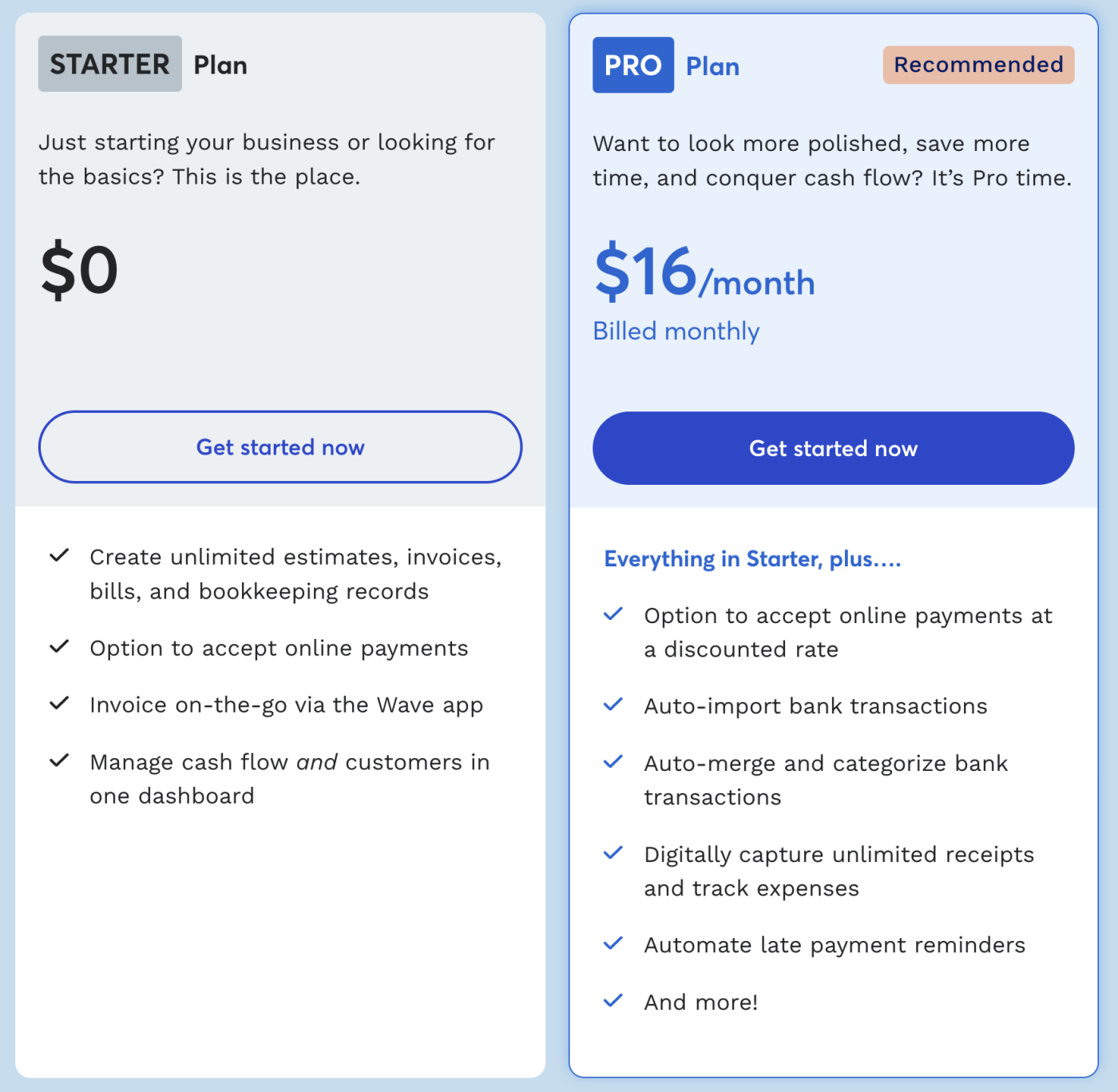
QuickBooks, on the other hand, is going to cost you, even for the most basic plan. It adds up even more if you opt for additional services like Payroll or Workforce, where employees can view their pay stubs and W-2 forms. While QuickBooks will almost certainly meet all of your small business’s accounting needs, it may not work for your wallet, as the platform is aimed at larger businesses with tiered price points and features to scale as you grow. That said, if you sign up during a sale, you can get a good deal for a few months.
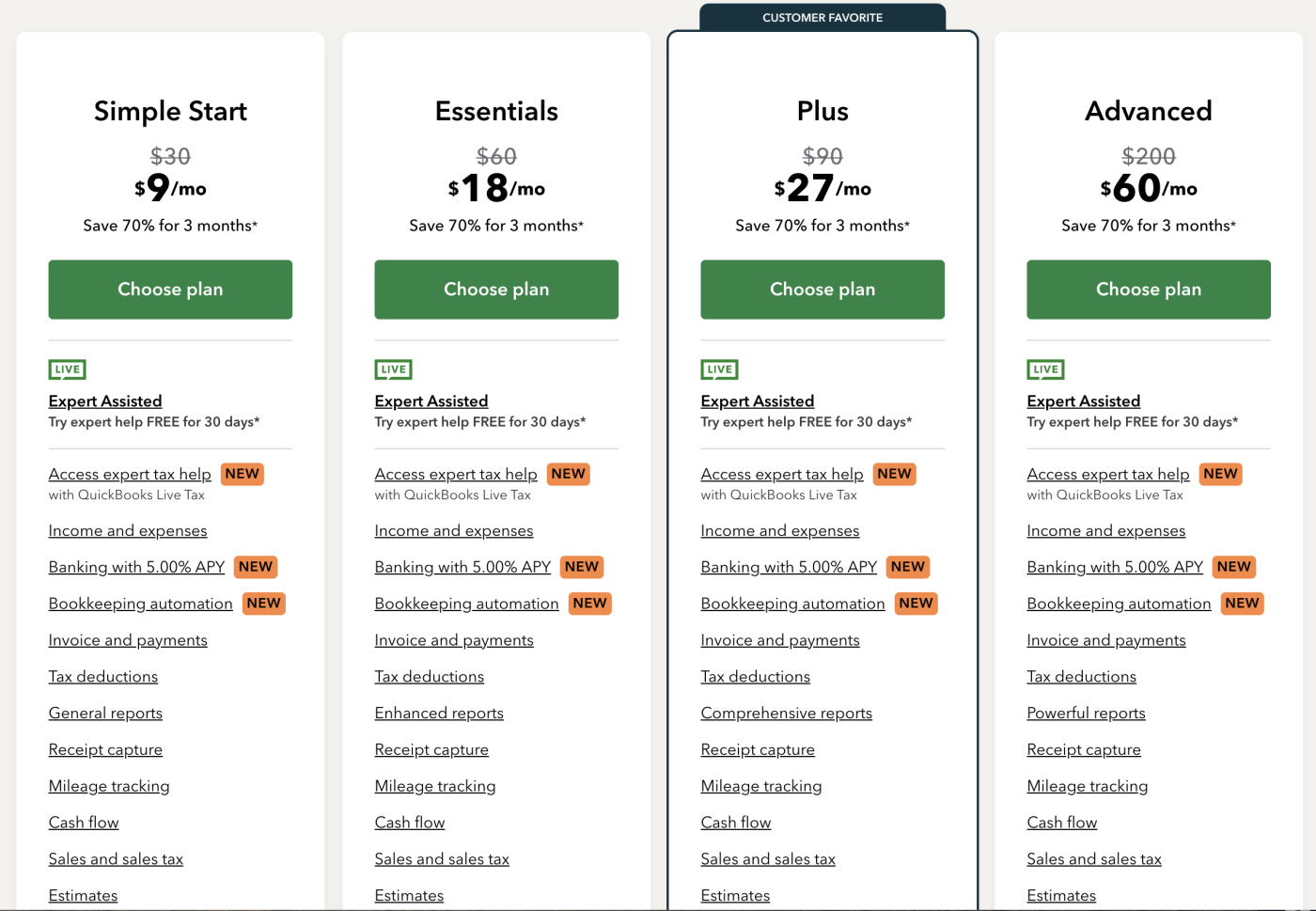
Both Wave and QuickBooks offer comparable invoicing functionality
Both platforms offer easy and intuitive invoicing functionality. When you create your first invoice in Wave, you’re guided to create a template first. The platform has a few template options to choose from, and even has the option to add branding like your logo and an accent color, which I thought was a nice touch.
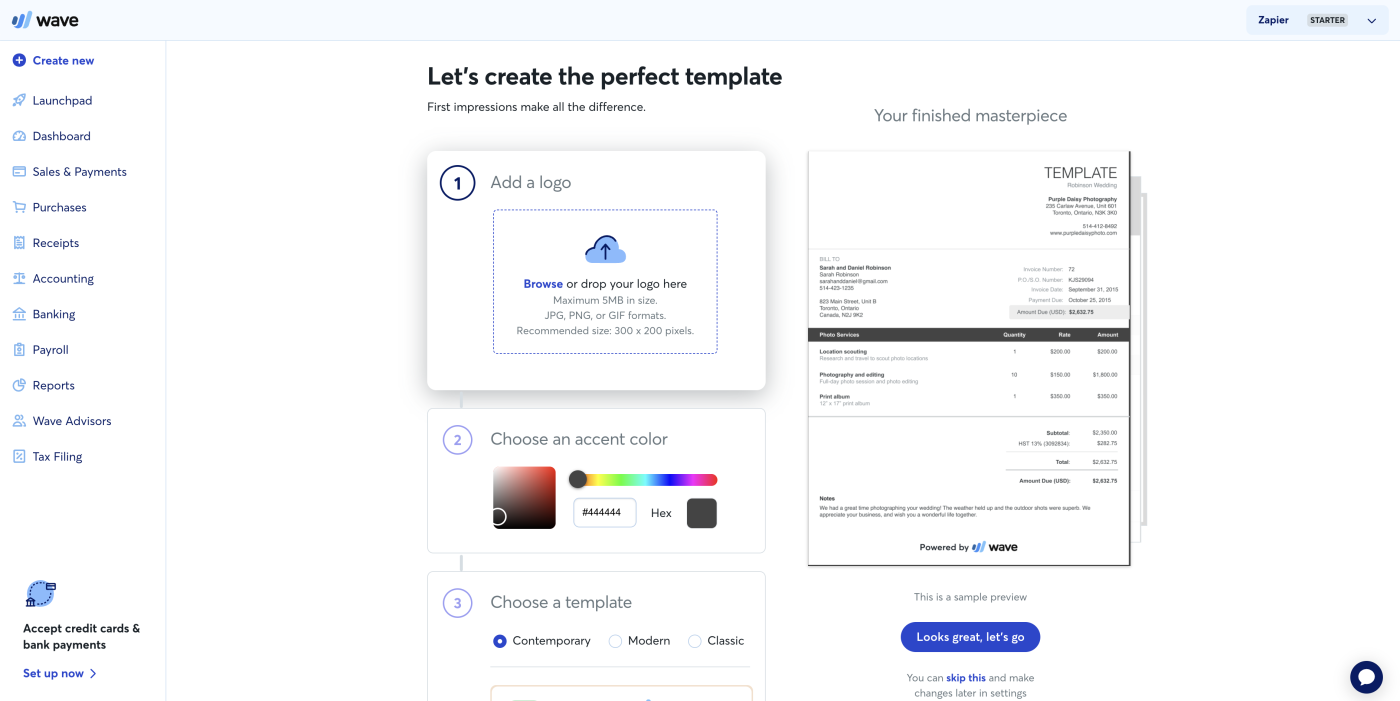
It’s super easy to create an invoice with Wave, and you can use that template to speed up the process in the future. There’s also a preview feature, so you can see how the invoice will look to your customers.
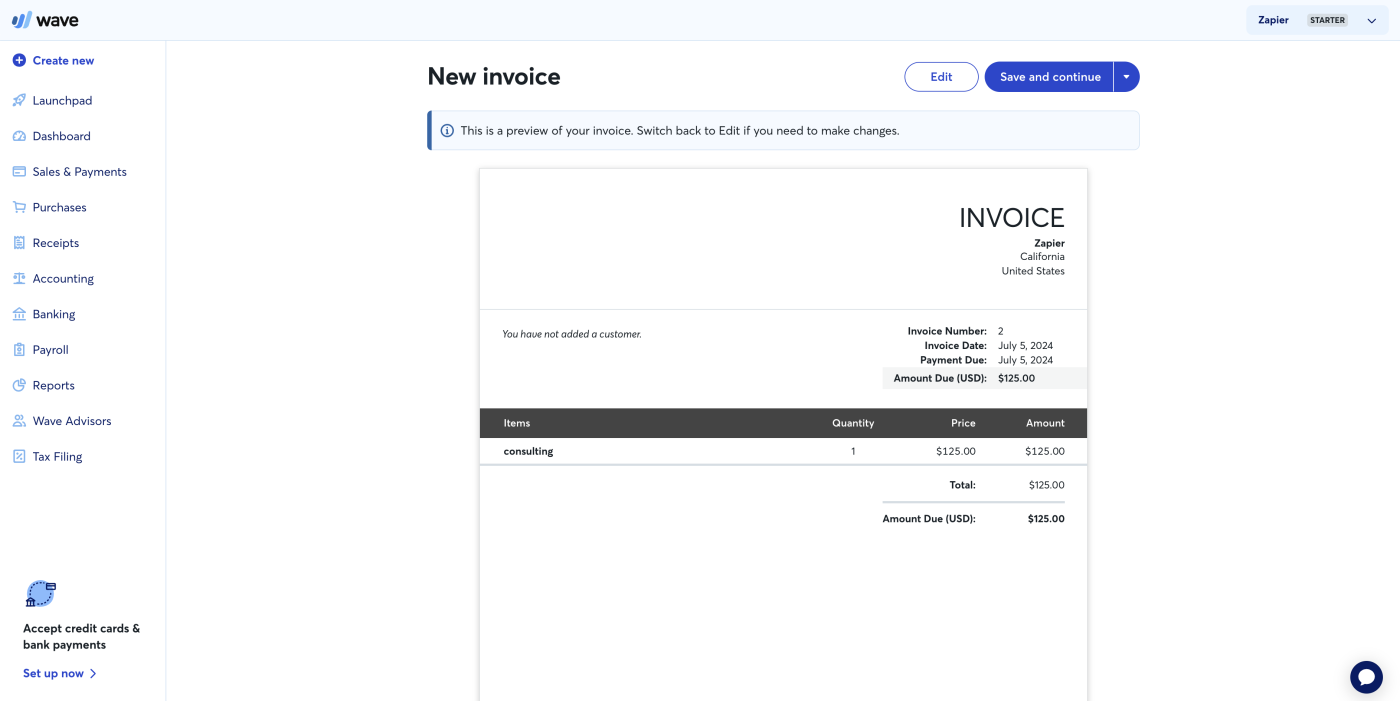
You can also add discounts with a toggle for dollars or percentage, which would have made easy math for my “spring thaw” special back in the day (especially since I hadn’t learned how to calculate percentages yet).
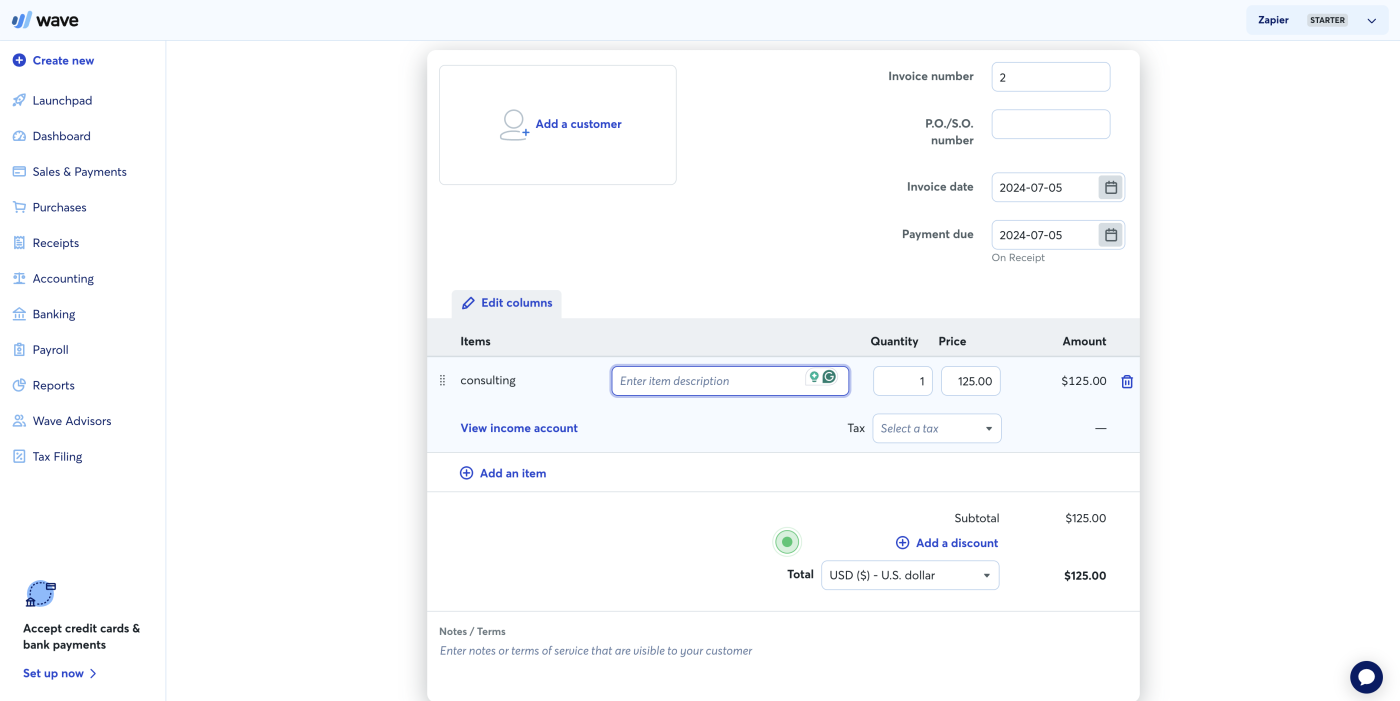
QuickBooks also has options to customize your template. You can change the color and style of the design, establish payment options, and even set payment terms (like net 30 or net 60). Also, the QuickBooks interface makes it feel like you have more options.
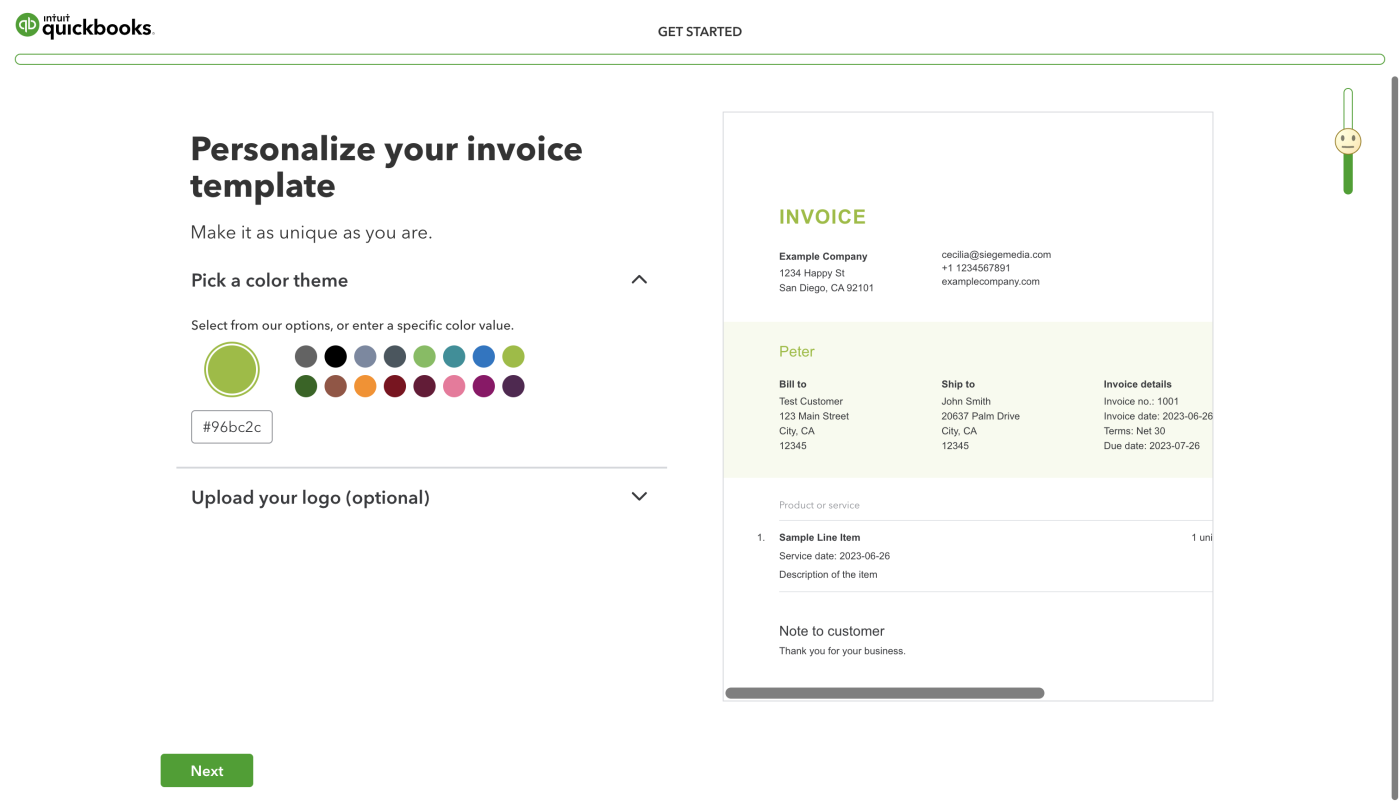
Once you have it set just the way you like it, you can see what your email will look like when you send your invoice to customers.
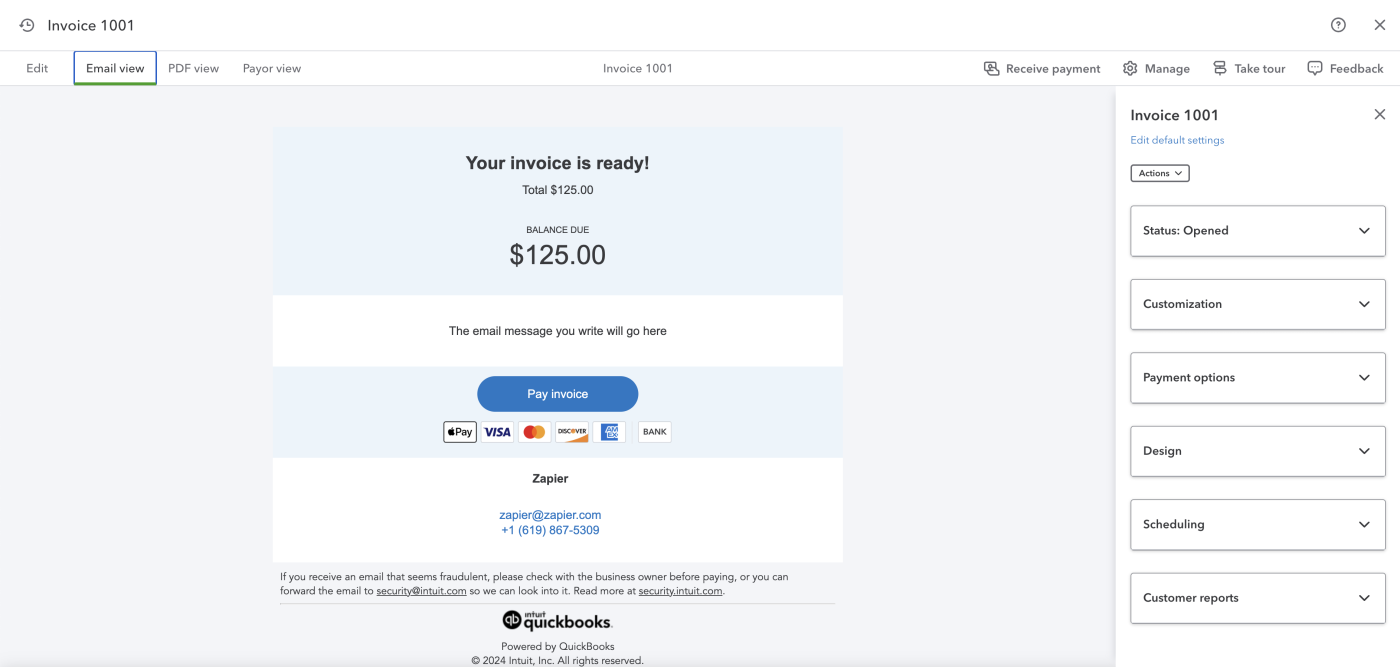
During the creation process, it took me a second to find where you create custom fields, implement payment options, and input discounts, but it was pretty straightforward once I located it. There are also multiple ways to preview your invoice beyond the email view, PDF and payor view.
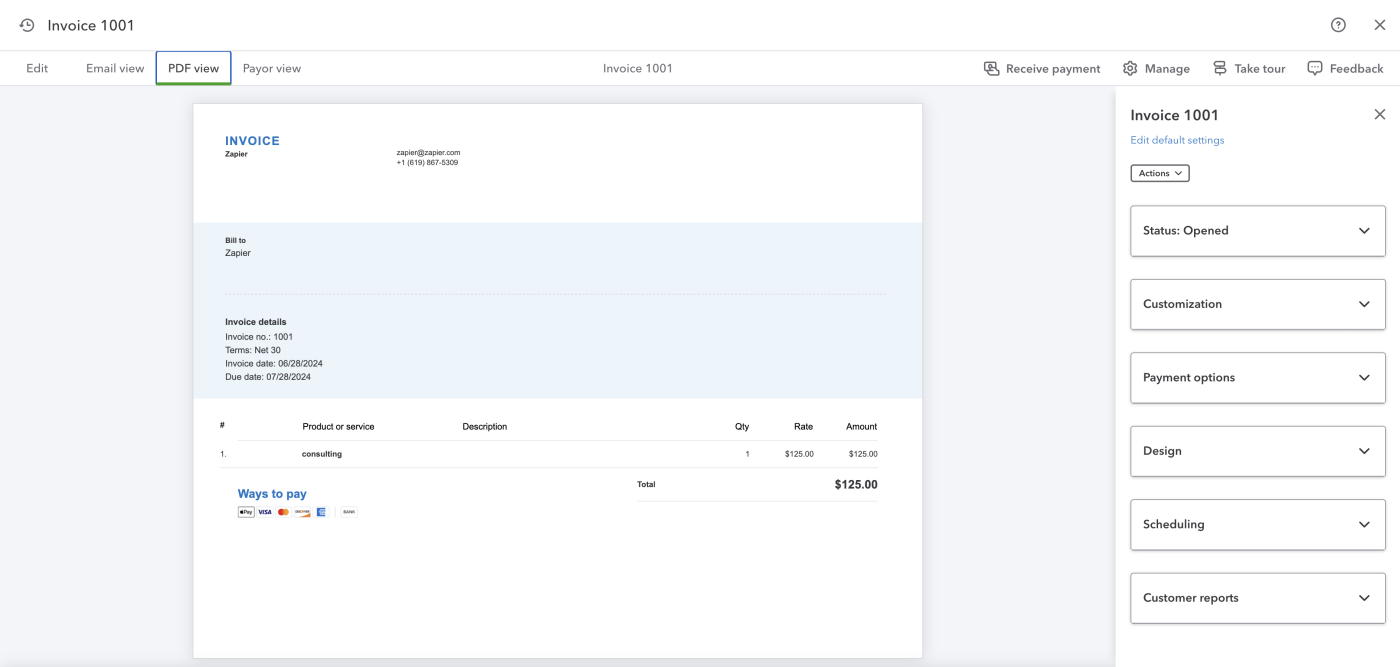
All in all, the invoice capabilities of both platforms are pretty similar, but I found Wave to be just a little easier to navigate. So if all you’re looking to do is send invoices, save some money and go with Wave.
QuickBooks boasts significantly more features than Wave
The extra cash you shell out for QuickBooks translates into a whole gamut of extra features. So not only do you get your money’s worth, but these features also help support the complex needs of larger businesses.
Time tracking
There’s a manual timesheet included with QuickBooks Online. The more advanced time tracking app, QuickBooks Time, is only available if you pay for QuickBooks Payroll, which comes at an additional cost. Employees can clock in and out for real-time tracking or retroactively add their time. There are also fields for billable hours to add specific customers and services.
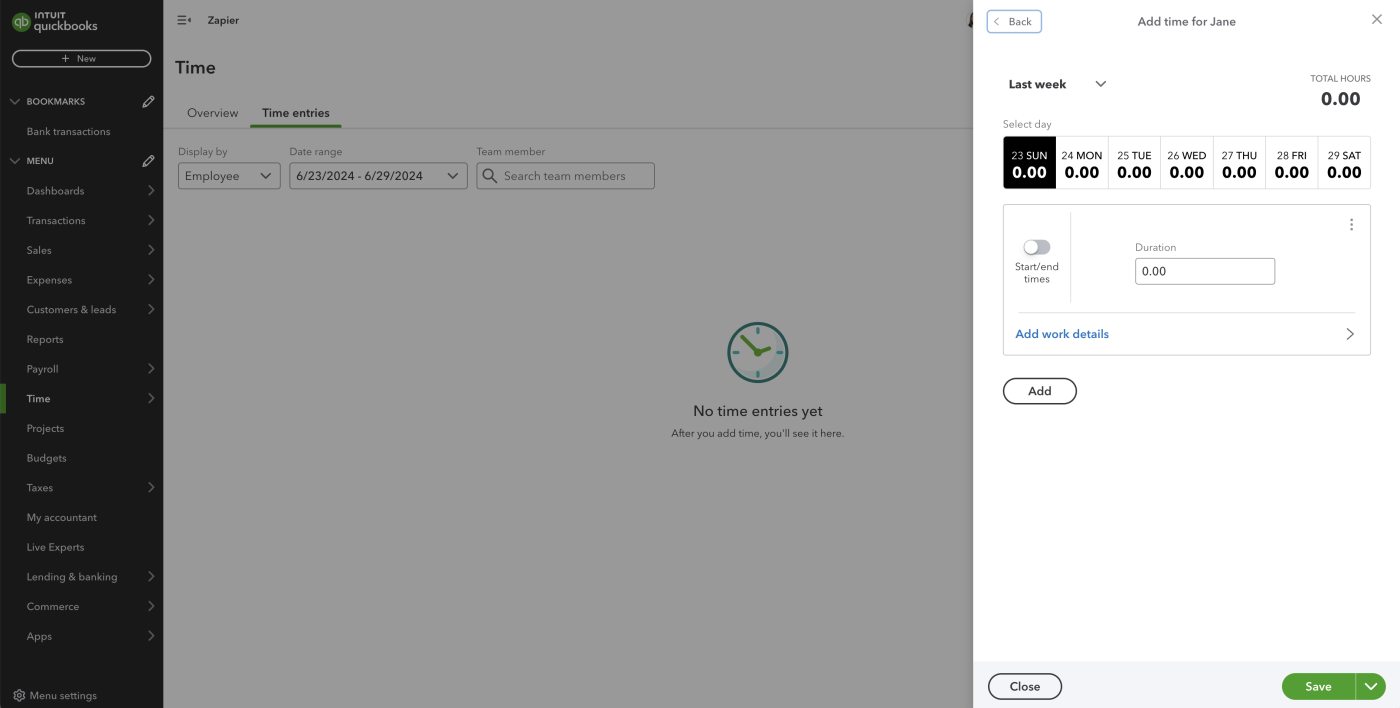
You also have features for scheduling work and time off, projects, approvals, and reports—all necessary features for a medium to large workforce. With Wave, you’d have to integrate a third-party app in order to track time.
Mileage tracking
Mileage tracking is another feature built into QuickBooks that Wave doesn’t have, unless you use a creative workaround. With this QuickBooks feature, your employees can enter their trip information. Trips then go into a bucket for your review, where you can confirm each trip as Business or Personal. There’s also a convenient Round Trip toggle, so you don’t have to manually enter two separate trips.
Complete with a dashboard displaying total miles, total business miles, potential deductions, vehicles, and mileage allowance, everything you need for employee compensation, tax deductions, and tracking mileage on business vehicles is there at a glance.
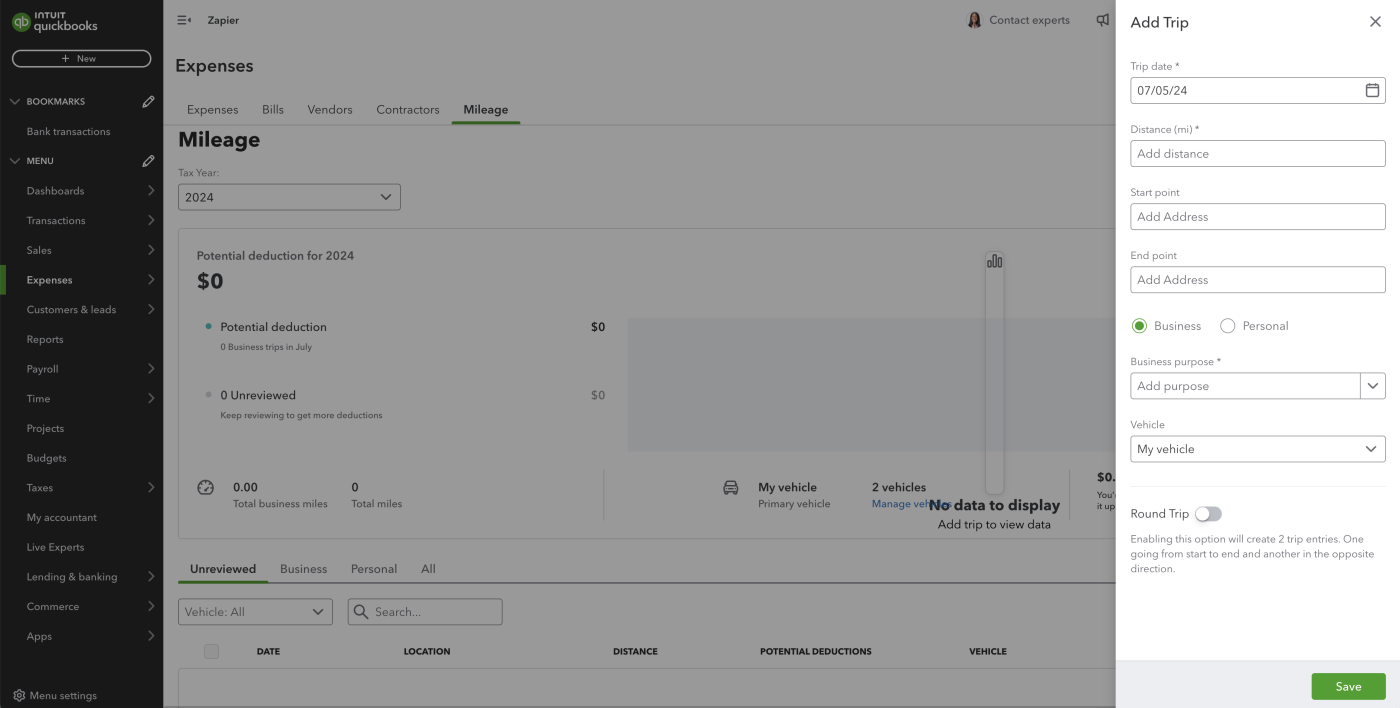
Advanced reporting
QuickBooks Online Advanced offers tons of report templates with categories for Business Overview, Who Owes You, Sales and Customers, What You Owe, Expenses and Vendors, Employees, For My Accountant, and Payroll. You can work off one of the (seemingly) hundreds of pre-made templates, or you can take one of those templates and customize it to meet your specific business needs.
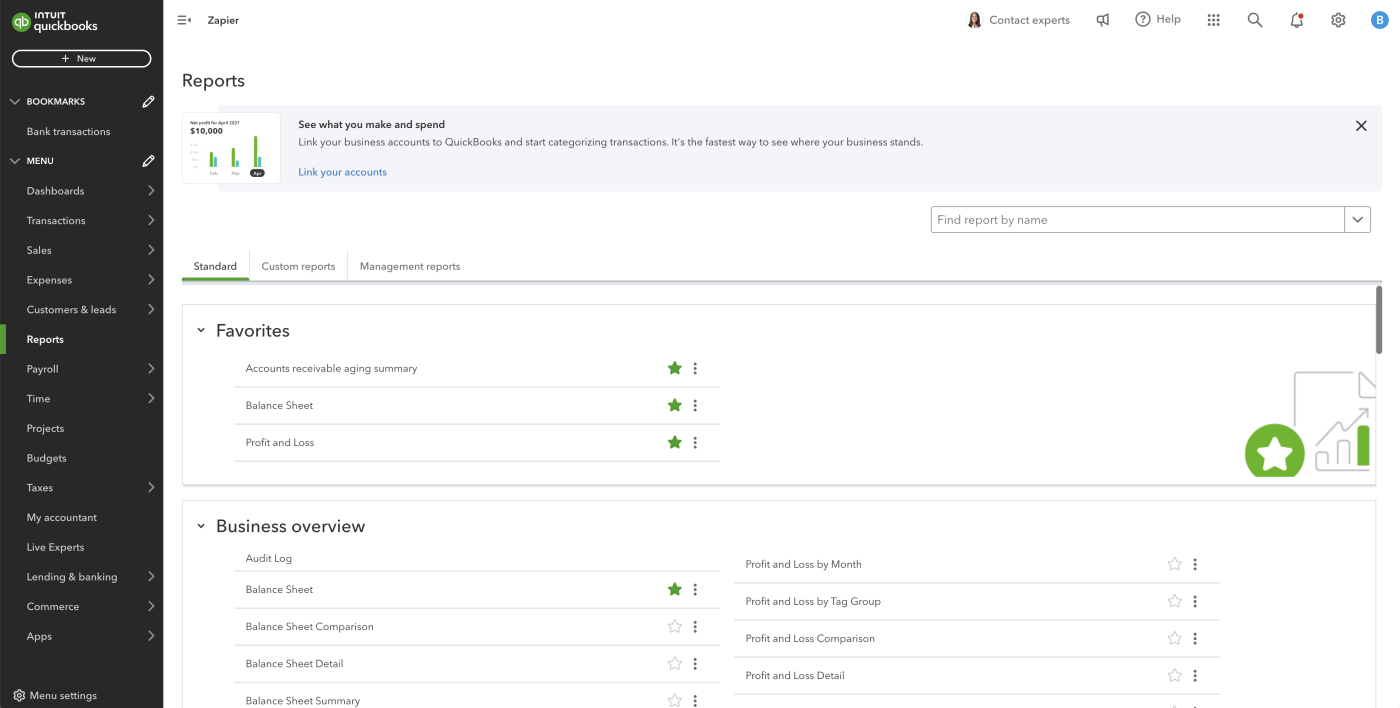
Wave offers its own set of report templates, but the list isn’t nearly as extensive. You can still track financial statements, taxes, payroll, customers, and vendors, but the amount of report templates is much more limited. And just like QuickBooks, payroll insights are only available with a paid add-on.

Inventory management
I only had to keep track of my ice cream bucket with my business, but if you sell a product, you’ll probably have a bit more to organize. Inventory management is available in QuickBooks Plus and up. To access the feature, you have to turn on a setting under Sales to allow inventory tracking, which I learned through a demo video. After that, you can input all your products or services and have the option to add pictures, stock quantity, vendor information, and more.
You also have the ability to create categories with four levels of subcategories. Once you’ve set up your inventory, you can create purchase orders to send to vendors. The inventory tracker will update when vendors bill you for products and after you invoice customers. Again, with Wave, you have to use a workaround to track inventory.
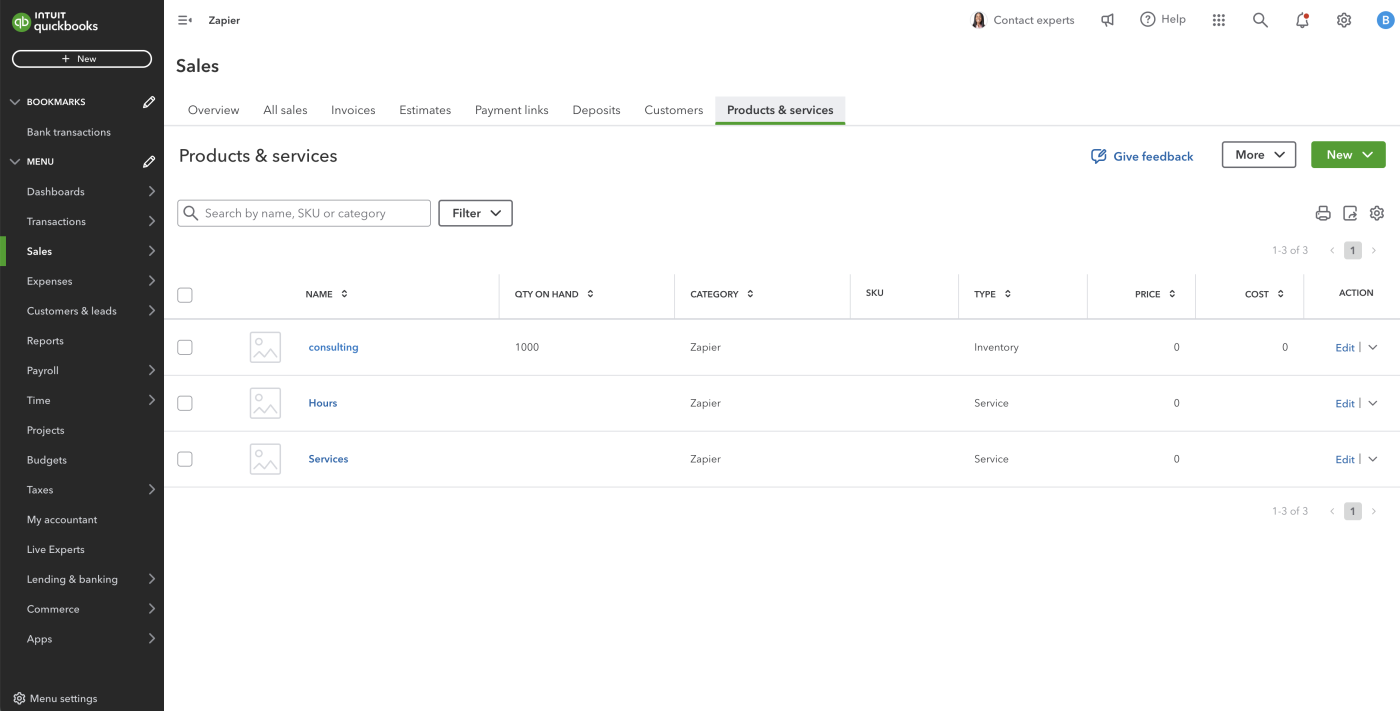
Live chat support
QuickBooks may be occasionally confusing, but it does have a live chat support feature to help you out of a pickle. You can get answers from a bot, guided to tutorials, or actually chat with a real live human.
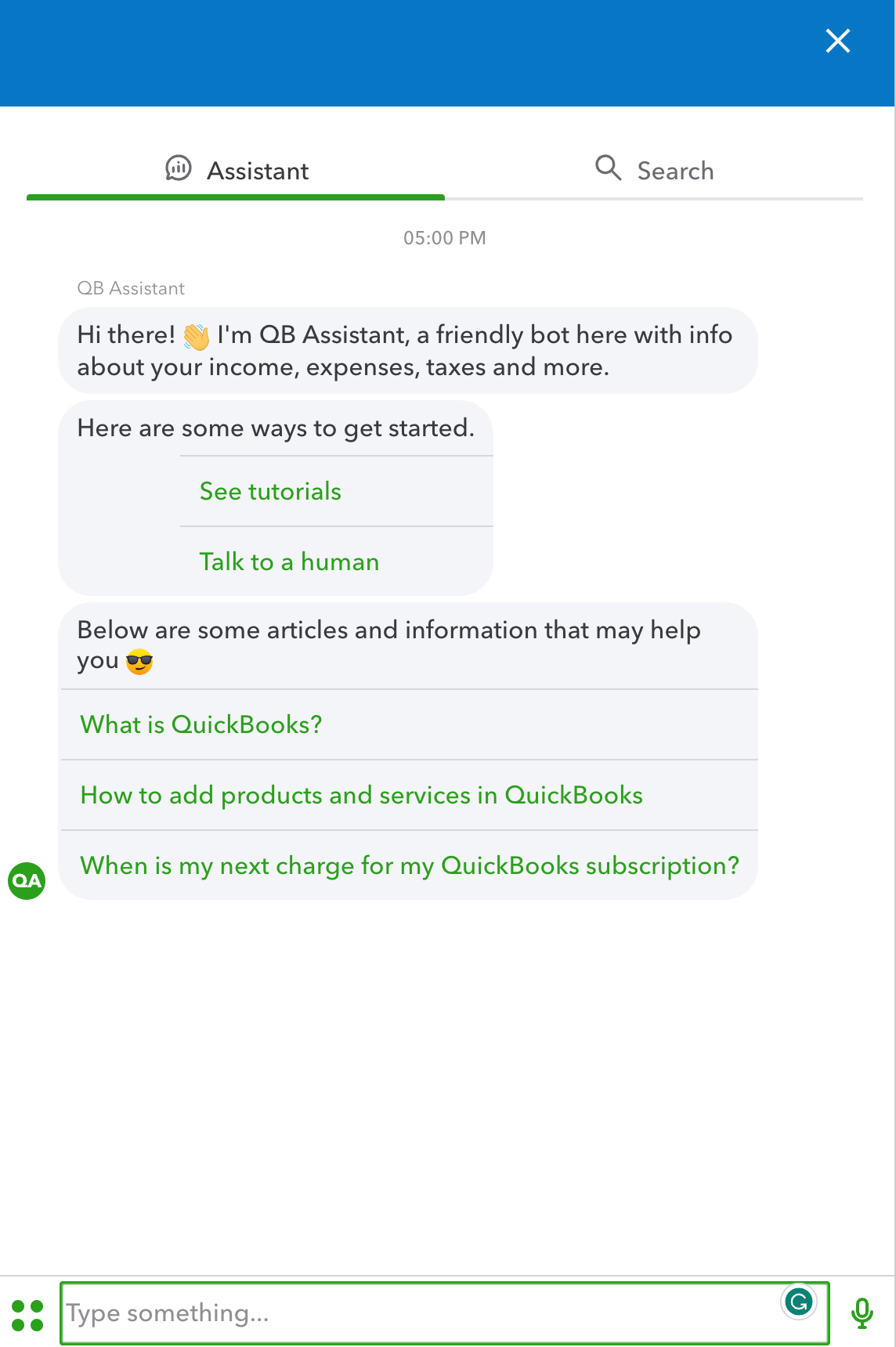
Wave has a help chat, but it’s restrictive. Users on the free plan can only access the automated chatbot and self-help resources, while those on the paid plan can access a human representative. But the only time you can talk to a human is Monday through Friday from 9 a.m. to 4:45 p.m. Eastern U.S. time by chat or email. Not ideal if you can’t figure out how to process incoming payments over the weekend.
Artificial intelligence
Even though my dog doo-doo disposal business is long gone, I still dream about where I might be today if I could’ve offered some form of AI. (Move over, Waste Management.)
Up until now, Wave hasn’t quite taken advantage of this technology. You could argue that Wave’s chatbot is a form of AI, but there are no other capabilities in reporting, invoicing, or general user experience upgrades. I couldn’t find anything showing they’re working toward new AI features, either.
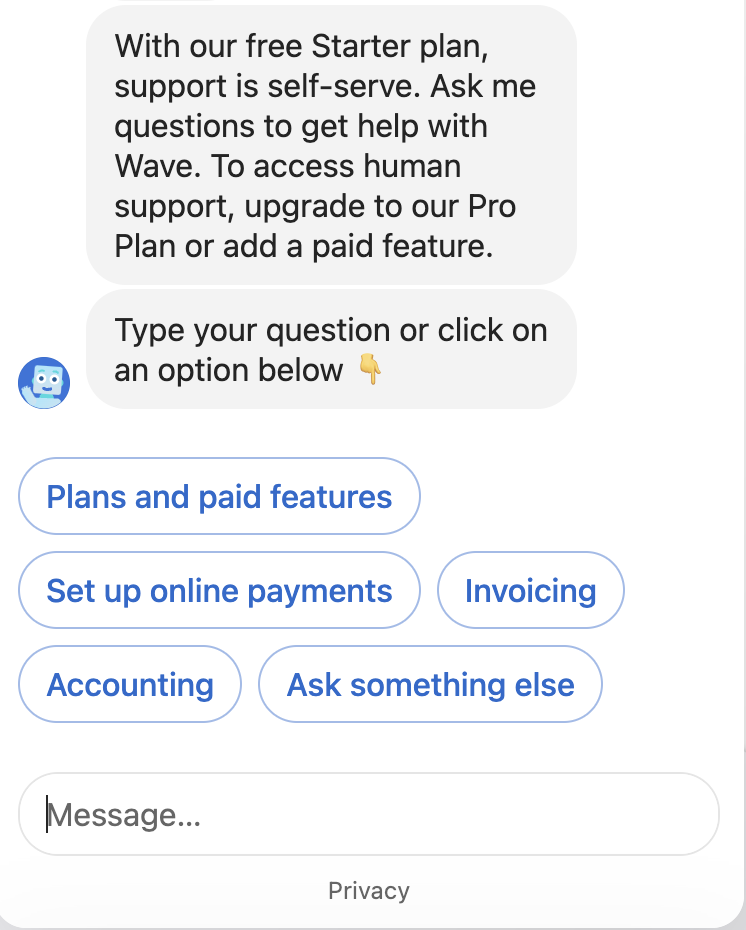
QuickBooks, on the other hand, is trying its hardest to ride the AI wave (no pun intended). In QuickBooks Online Accountant, several features use AI to do things like automatically highlight key insights and actionable items in business reports.
It also has plans to roll out Intuit Assist—an AI-powered accounting assistant that can highlight important trends in your data and complete tasks automatically. The assistant will be able to automatically draft and send overdue invoices, automate expense records, and complete basic administrative work without human intervention.
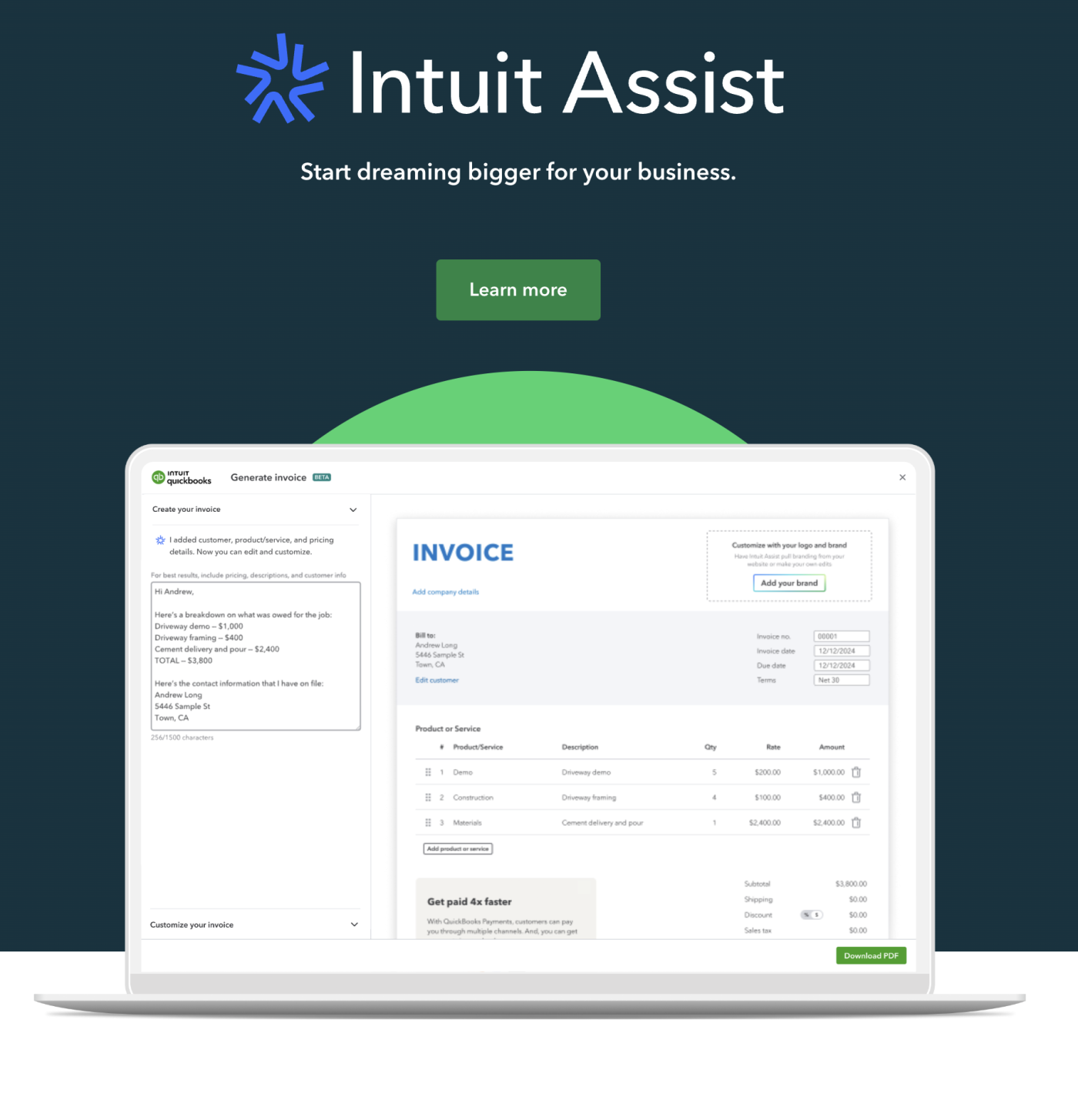
So, while Quickbooks Online doesn’t have too many AI features as I write this, it looks like advanced capabilities are on the horizon.
While simpler, Wave is more user-friendly
Ten-year-old me could have figured out how to use Wave. QuickBooks? Not so much.
One example is setting sales tax on your invoices. With QuickBooks, you can enter your location, and QuickBooks will figure out the requirements for your area. But when I went to configure it, the app booted me out of my invoice draft and I lost all my work.
And then when it did load my location’s sales tax requirements, it didn’t automatically apply that to my invoice or even let me override whatever was going on to manually apply the rate. It would be a useful feature if it worked consistently.
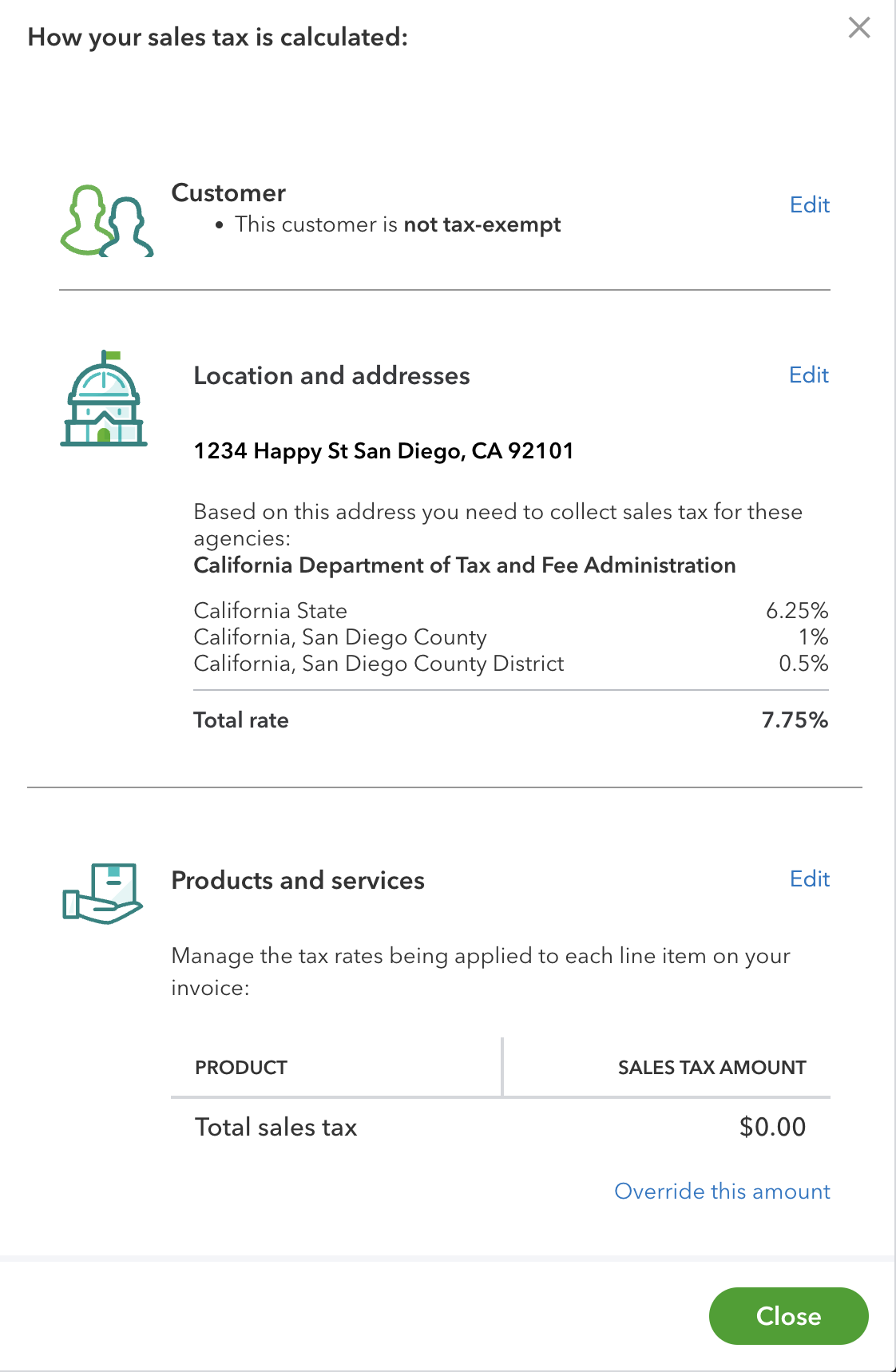
While Wave didn’t have the option to find my area’s sales tax requirements, it was way easier to just type the tax rate I wanted and apply it to the invoice. As it should be.
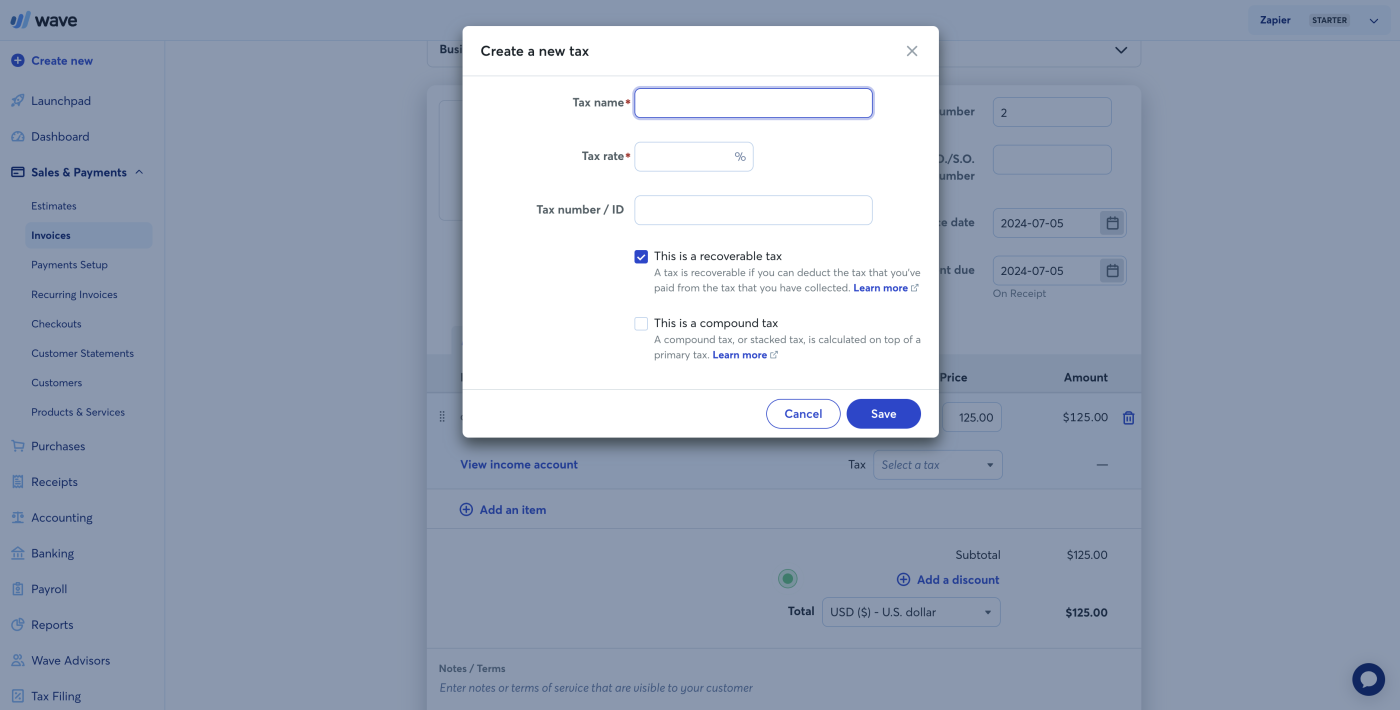
While both platforms have digestible dashboards, I found it a bit harder to locate features on QuickBooks than on Wave. Often, features were tucked into a folder within a folder. I had to rely heavily on QuickBooks’ search function to find many of its features, and there were even times I had to Google where to find the feature. Now, a good chunk of that is probably user error, but I shouldn’t have to go digging to find my invoices.
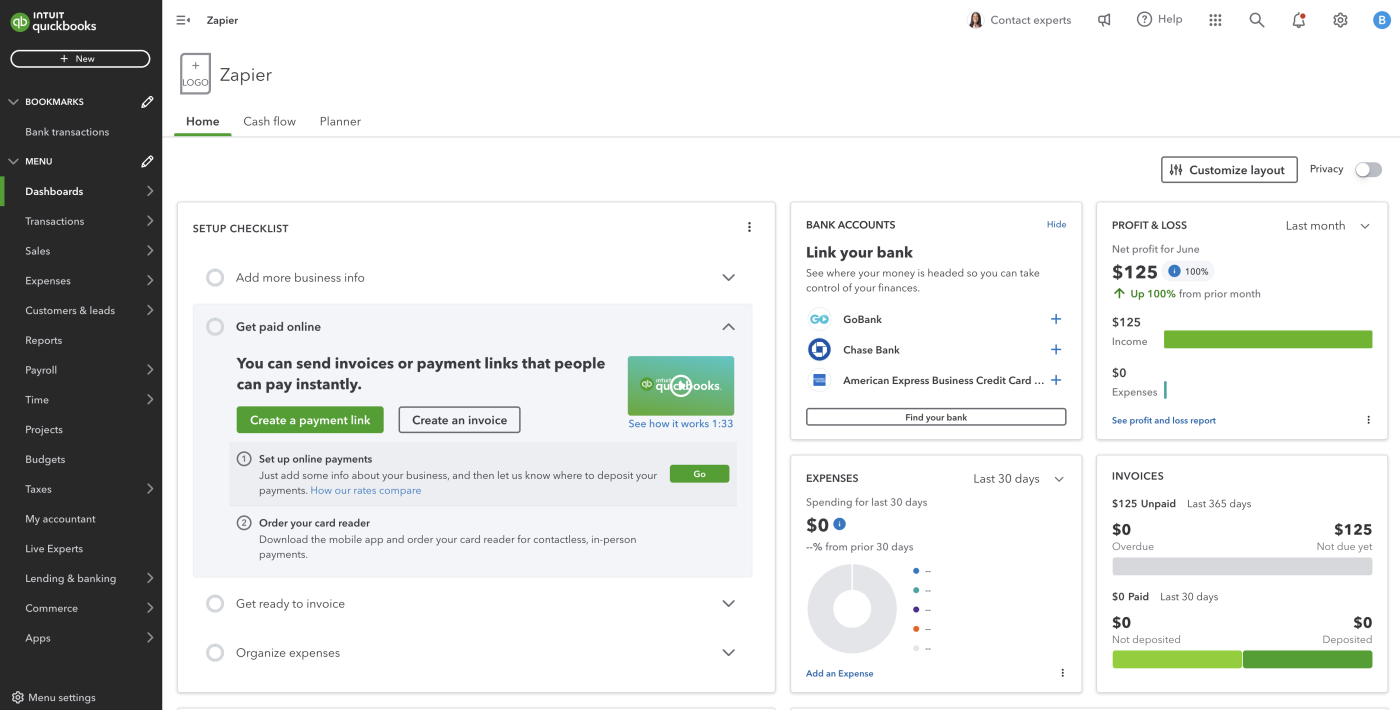
Granted, QuickBooks will be more complex than Wave merely due to the number of additional features it supports. But if you don’t have complex needs, why overcomplicate it?

Wave vs. QuickBooks: Which should you choose?
There’s not a clear winner here. It really comes down to choosing an option that meets your needs at a price point you’re comfortable with.
If you’re a (really) small business or a freelancer needing bookkeeping, Wave will likely have everything you need for free and offers expanded features in a paid plan that still comes out to be cheaper than QuickBooks (without sale pricing). And as long as you don’t have any plans of rapidly expanding, you can’t beat that.
But if you’re a medium to large business or even a small business that’s growing quickly, QuickBooks will have the features you need to scale. Yeah, you’ll pay quite a bit more, but it’ll likely be worth it to help you scale efficiently.
One other element that might sway your decision is tax software. QuickBooks is owned by Intuit, so it connects to TurboTax. So if you’re a loyal TurboTax user, it might be worth it to go with QuickBooks just for an easier go at it when tax season rolls around. On the flip side, Wave connects to H&R Block, so the same logic applies if you already use H&R Block.
Automate your accounting software
No matter which platform you choose, Wave and QuickBooks both integrate with Zapier, so you can create automations to spend less time on bookkeeping and more time growing your business. Learn more about how to automate Wave or automate Quickbooks, or try one of these pre-made workflows.
Zapier is a no-code automation tool that lets you connect your apps into automated workflows, so that every person and every business can move forward at growth speed. Learn more about how it works.
Wave vs. QuickBooks FAQ
Still stuck between the two accounting tools? Here are answers to the most common Wave vs. QuickBooks questions.
Does Wave connect to QuickBooks?
Wave doesn’t natively integrate with QuickBooks. However, you can use Zapier to connect Wave to QuickBooks. For example, you could automate workflows between the two platforms to create and send a QuickBooks invoice for every new Wave invoice—no code required.
Can you migrate from QuickBooks to Wave?
Yes, you can migrate from QuickBooks to Wave. You’ll first need to delete your outstanding invoices and bills from QuickBooks. From there, you can merge your data by using the Add Journal Transaction functionality. It’s important to note Wave won’t have specific QuickBooks accounting history, so you should keep a copy of old transactions for your records.
What percentage does Wave invoicing take?
Wave’s free plan charges a 2.9% + $0.60 fee for credit card transactions, while the Pro plan waives that $0.60 fee for the first 10 transactions per month. In both plans, there’s a 3.4% + $0.60 fee for AMEX transactions, 1% for each bank transaction, and a $1 minimum fee for every invoice payment it processes.
On the other hand, QuickBooks charges fees based on how you process a transaction. It charges 1% for ACH bank transfers, 2.5% for using a credit card reader, 2.99% for online invoices, and 3.5% for keying in a credit card.
Related reading:
This article was originally published in July 2023 and has since been updated with contributions from Ben Lyso. The most recent update was in July 2024.